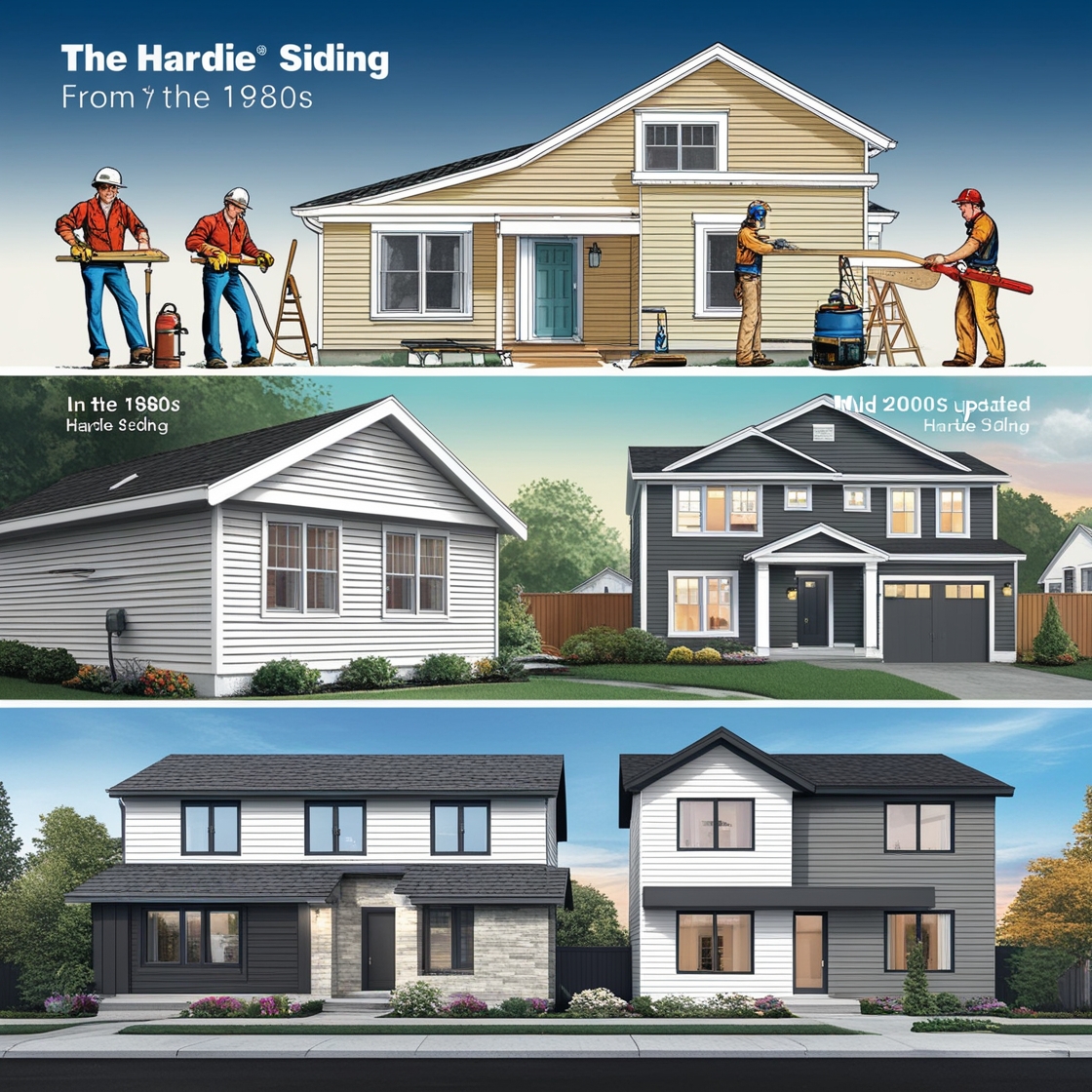The History and Evolution of Hardie Siding: A Game-Changer in the Building Industry.
August 19, 2024

James Hardie siding, commonly known as HardiePlank or Hardie siding, has become synonymous with durability, aesthetic appeal, and innovation in the home construction and renovation industry. As one of the most recognized and trusted names in siding, Hardie siding has transformed the way homeowners protect and enhance their homes. But when did this game-changing product first come onto the market, and how did it evolve to become a leading choice for builders and homeowners worldwide? This article delves into the history, development, and impact of Hardie siding, tracing its roots back to its origins and exploring its journey to becoming a household name.
The Origins of James Hardie Industries
The story of Hardie siding begins with the foundation of James Hardie Industries, a company that would go on to revolutionize the building materials industry. The company was established in 1888 by James Hardie, a Scottish immigrant who settled in Melbourne, Australia. Initially, James Hardie Industries focused on importing and distributing oils and animal hides, but it wasn’t long before the company began diversifying into building products.
After James Hardie retired, Andrew Reid, an employee who had become a partner in the business, took over. Reid was instrumental in steering the company towards innovation in the building materials sector. Under his leadership, James Hardie Industries began developing new products, including asbestos cement, which was widely used in construction for its fire-resistant properties. However, as the dangers of asbestos became known, the company was compelled to search for safer, more effective alternatives.
The Birth of Fiber Cement Siding
The quest for a better building material culminated in the development of fiber cement siding in the 1980s. This was a pivotal moment for the company and the industry as a whole. Fiber cement siding was created by combining cement, sand, and cellulose fibers. This innovative material offered the durability and fire resistance of cement while being much safer and more versatile than asbestos.
In 1980, James Hardie Industries introduced Hardie siding to the market, marking the beginning of a new era in exterior home protection and design. The introduction of this product was a game-changer, as it provided an alternative to traditional wood and vinyl siding that was not only more durable but also more resistant to the elements.
Why Hardie Siding Was Revolutionary
Hardie siding quickly gained popularity due to several key advantages:
- Durability and Longevity: One of the most significant selling points of Hardie siding is its durability. Unlike wood, it is resistant to rot, warping, and termites. Unlike vinyl, it can withstand extreme weather conditions without cracking or fading. This longevity makes it a cost-effective investment for homeowners.
- Fire Resistance: Hardie siding’s fiber cement composition makes it non-combustible, providing an added layer of protection against fire. This feature was particularly appealing in areas prone to wildfires, making it a preferred choice for many builders and homeowners.
- Aesthetic Versatility: Hardie siding offers the look and feel of traditional wood siding without the associated maintenance. It can be manufactured in various textures and finishes, allowing homeowners to achieve the aesthetic they desire, whether it’s a classic, rustic, or modern look.
- Low Maintenance: Hardie siding requires less maintenance than wood, which needs regular painting and sealing. The material is also resistant to pests and moisture, reducing the likelihood of damage and the need for frequent repairs.
- Environmental Considerations: As the industry began to prioritize sustainability, Hardie siding stood out for its environmentally friendly properties. The product is made from sustainable materials and has a longer lifespan than many alternatives, reducing the frequency of replacements and the associated environmental impact.
The Evolution and Global Expansion of Hardie Siding
Following its introduction in the 1980s, Hardie siding rapidly gained traction in the United States and other markets. As the company expanded its operations globally, it continued to innovate and improve its products. James Hardie Industries invested heavily in research and development, refining the composition of its fiber cement siding to enhance its performance and broaden its appeal.
By the 1990s, Hardie siding had become a dominant force in the U.S. market, where it was widely adopted by homeowners, builders, and architects. The company’s commitment to quality and innovation allowed it to maintain its position as a leader in the industry, even as competitors began to emerge.
In the early 2000s, James Hardie introduced the HardieZone system, which tailored siding products to specific climate conditions. This innovation further cemented the company’s reputation for producing siding that could withstand the unique challenges of different environments, from the humid Southeast to the frigid North.
The Impact of Hardie Siding Today
Today, Hardie siding is recognized as a benchmark for quality in the siding industry. It has been installed on millions of homes worldwide, earning a reputation for being a product that delivers on its promises of durability, beauty, and protection.
The success of Hardie siding has also had a broader impact on the building materials industry. It has set a standard for what homeowners and builders expect from exterior cladding products, driving the industry towards safer, more durable, and more aesthetically pleasing options.
Moreover, Hardie siding’s popularity has contributed to the growing trend of using fiber cement as a preferred material in various applications, from residential to commercial buildings. Its influence can be seen in the increasing number of fiber cement products available on the market today, as well as in the ongoing innovations within the industry.
Recent Comments